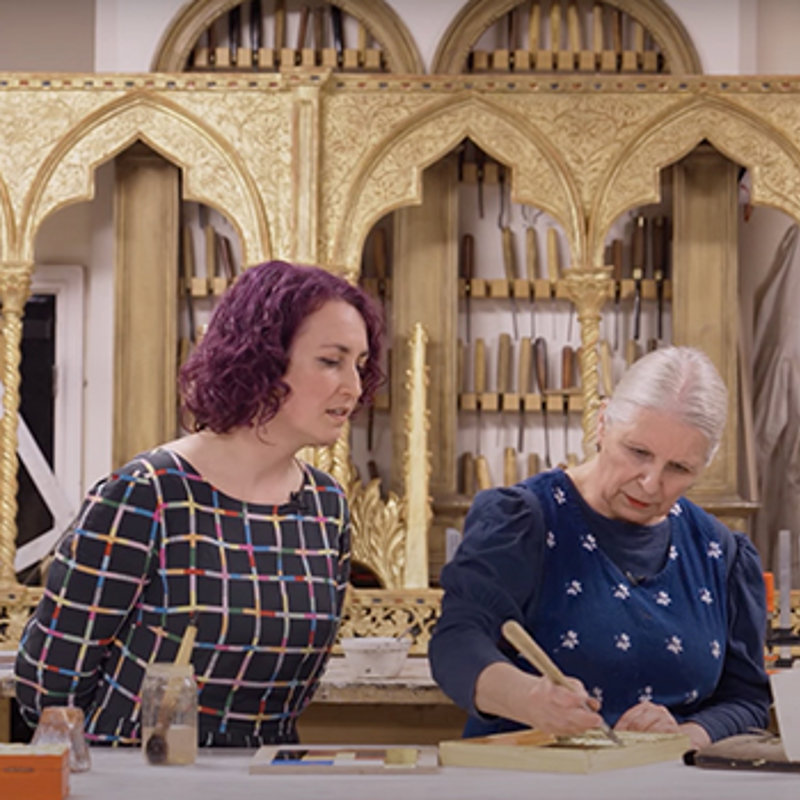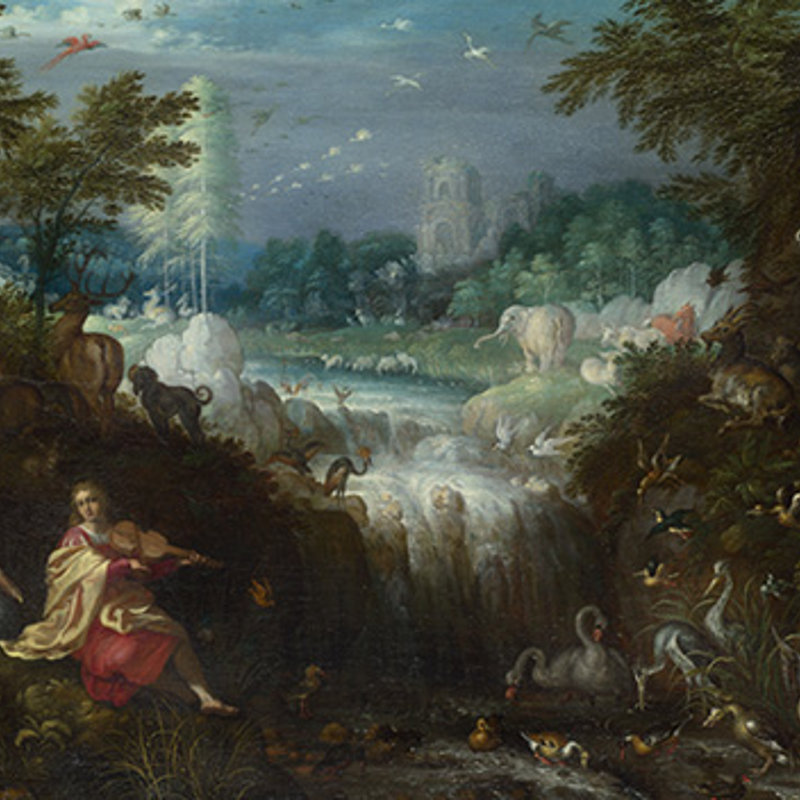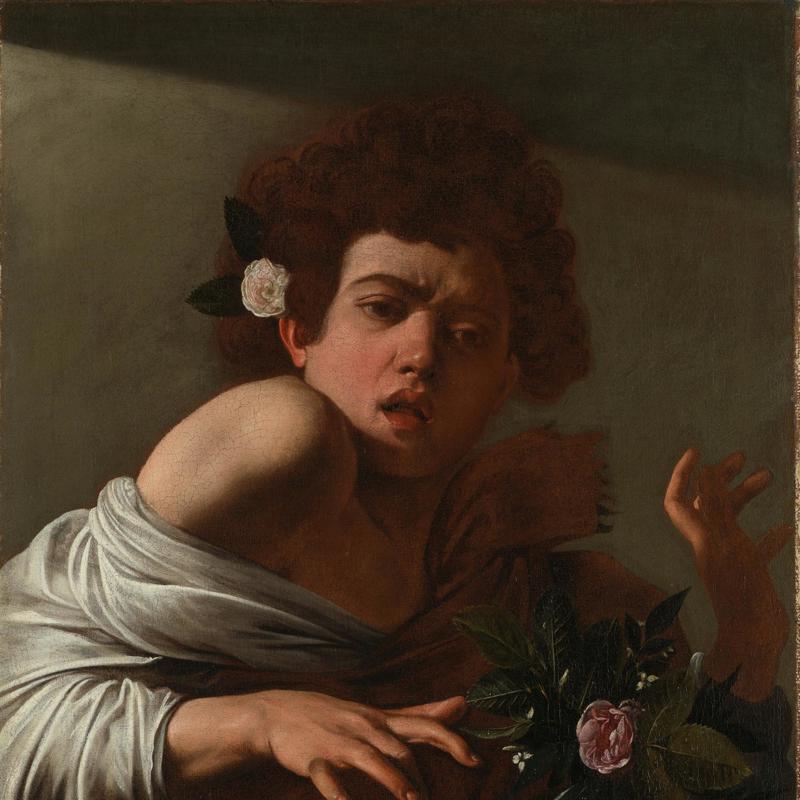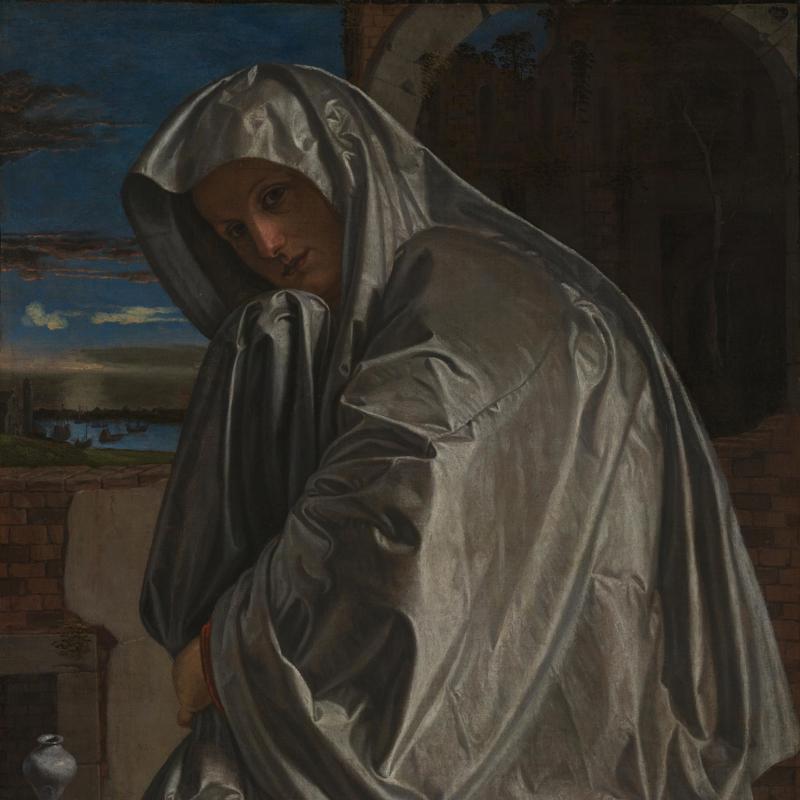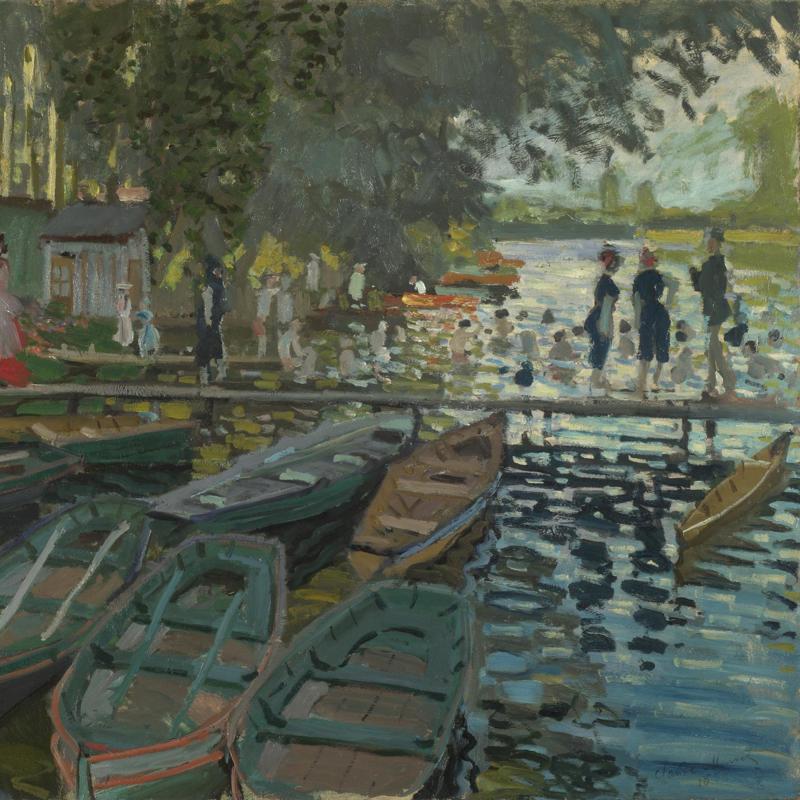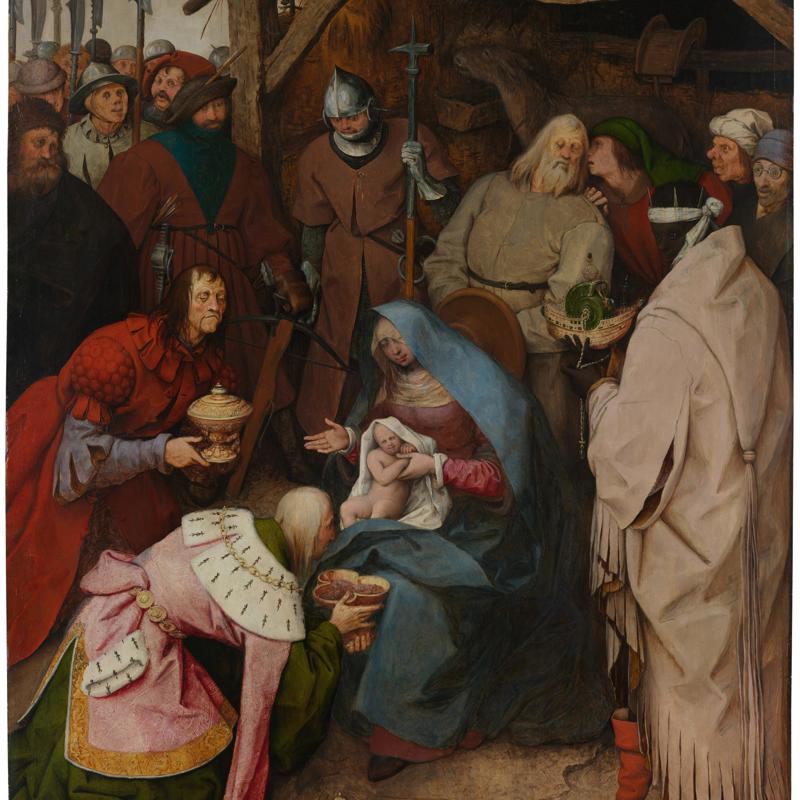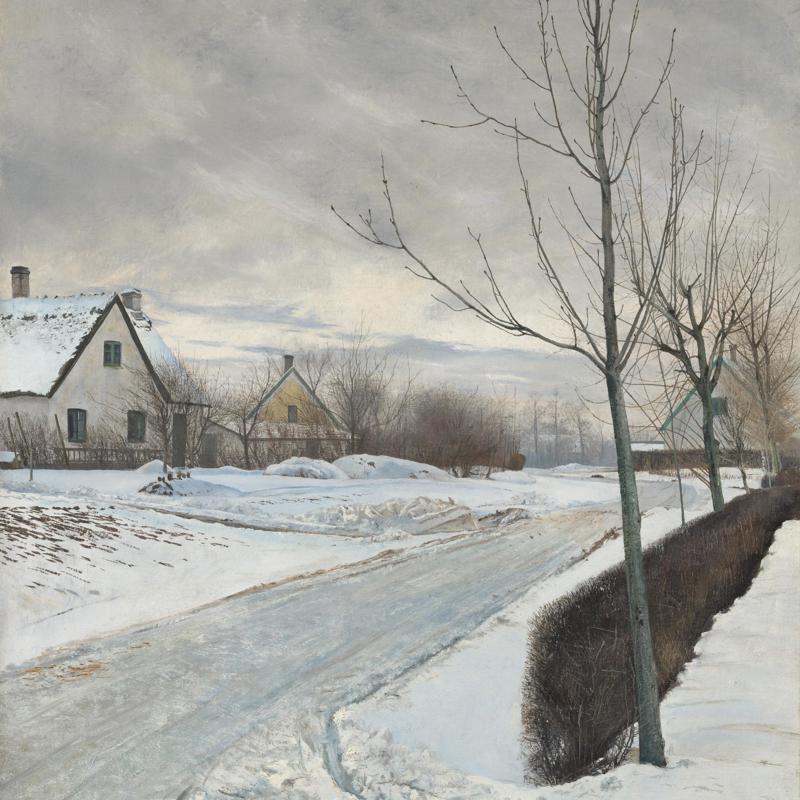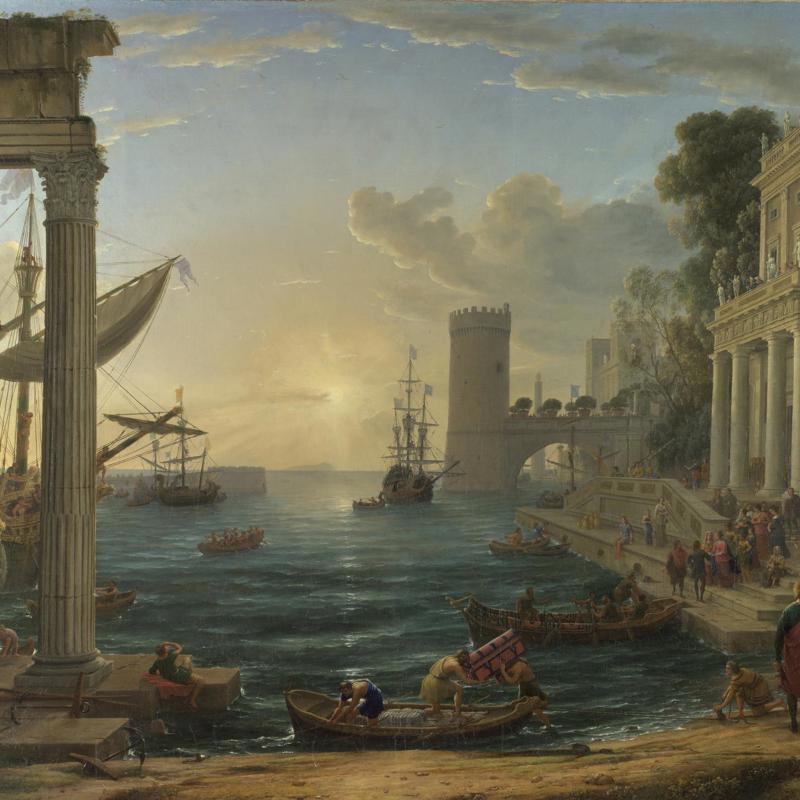Want to learn more about the use of gold in early Renaissance art? Listen to our podcast Stories in Colour for a glistening history.
The Virgin Mary is one of the most recognisable people in the history of art. She graces the walls of the National Gallery in hundreds of paintings, but this one is rather unusual.
Dressed in a luxurious blue gown, she stands facing the viewer, her eyes locked on us. A dazzling golden crown, heavy with jewels, sits on her neatly braided hair. She lifts her golden sleeve and points a hand towards her well-dressed attendants.
At first glance, you might think this was a painting of a medieval queen. Yet the glistening halo around her head and the Christ Child sat gently in the crook of her arm tell us otherwise.
The fashionable world of Florence
Created around 1440-1450, ‘The Virgin and Child with Six Angels and Two Cherubim’ offers us a glimpse into the fashionable world of early Renaissance Florence.
The Virgin’s unusual standing pose shows off her elegant gown, which is woven with a floral pattern and lined with ermine fur. If you look closely, you’ll see it is edged with gold tassels. Christ’s elaborate outfit, complete with fur-lined cape, is a miniature version of his mother’s, though it includes even more gold embroidery.
Mary’s large jewelled crown sits on top of a semi-transparent veil, probably made of fine linen or silk. Her belt is high on her waist, a trend that was fashionable in the late 1440s or early 1450s. Here she is shown as the height of fashion, in clothing that wealthy Florentines would have aspired to wear in the mid-fifteenth century.
A similar outfit to the one the Virgin Mary is shown as wearing in this painting can be seen in Fra Filippo Lippi’s ‘Portrait of a Woman with a Man at a Casement’ wears a similar outfit, although with a head dress instead of a crown.
A closer look at the heavenly retinue
The young men around Mary are similarly dressed. They are wearing patterned hose (stockings) and long doublets (fitted jackets) which are trimmed with fur and decorated with gold thread on the sleeves. These clothes look like what men wore in Florence around the 1440s and early 1450s.
Unusually, the Virgin Mary’s entourage isn’t shown praying or doing anything that looks like worship. They could even be mistaken for medieval page boys, yet one thing gives them all away. The tiny golden wings that poke out from their shoulders tell us that they are angels, attending to the Queen of Heaven. Look even closer and you will notice the writing on their sleeves, which refers to hymns praising Jesus.
Other references to the divine in the painting are equally subtle, such as the flowers that two of the angels hold in their hands. These are carnations, whose Greek name, dianthos, means ‘flower of God’.
They often symbolised Jesus’ Crucifixion, as legend says that they first grew from the Virgin Mary's tears as she wept for her son. A reference to this can also be seen on the predella, the horizontal base of the painting. Here Jesus is shown in adulthood alongside Saint John the Evangelist and his mother, who bows her head in sorrow.
Above the angels’ heads, cherubim are inscribed into the gold background, allowing their delicate faces to shine when caught in the light. It is clear this work of art has been carefully crafted, but who might have owned it?
Painting for private devotion
‘The Virgin and Child with Six Angels and Two Cherubim’ was likely never intended to be displayed in a church.
Instead, it would probably have been found in the home of a wealthy Florentine for use in personal prayer. In Renaissance Italy, it wouldn’t have been unusual for small religious paintings like this to be placed in the home for private devotion.
Private images of the Virgin and Child were often made for women and there is some evidence they were given as wedding gifts. Showing tender moments between mother and son, they brought their viewer spiritually and emotionally closer to their faith.
In the case of this painting, it may have been made for a wealthy woman who belonged to Florence’s fashionable elite. Perhaps she could identify more closely with the Virgin if she looked like the women she spent her life around.
Dressed in the latest fashions against a backdrop of glistening gold, it’s easy to see how Bartolomeo’s ‘Virgin Mary’ could have a captivating effect on the person who had it in their home, just as it does for the millions of visitors who see it at the National Gallery now.






